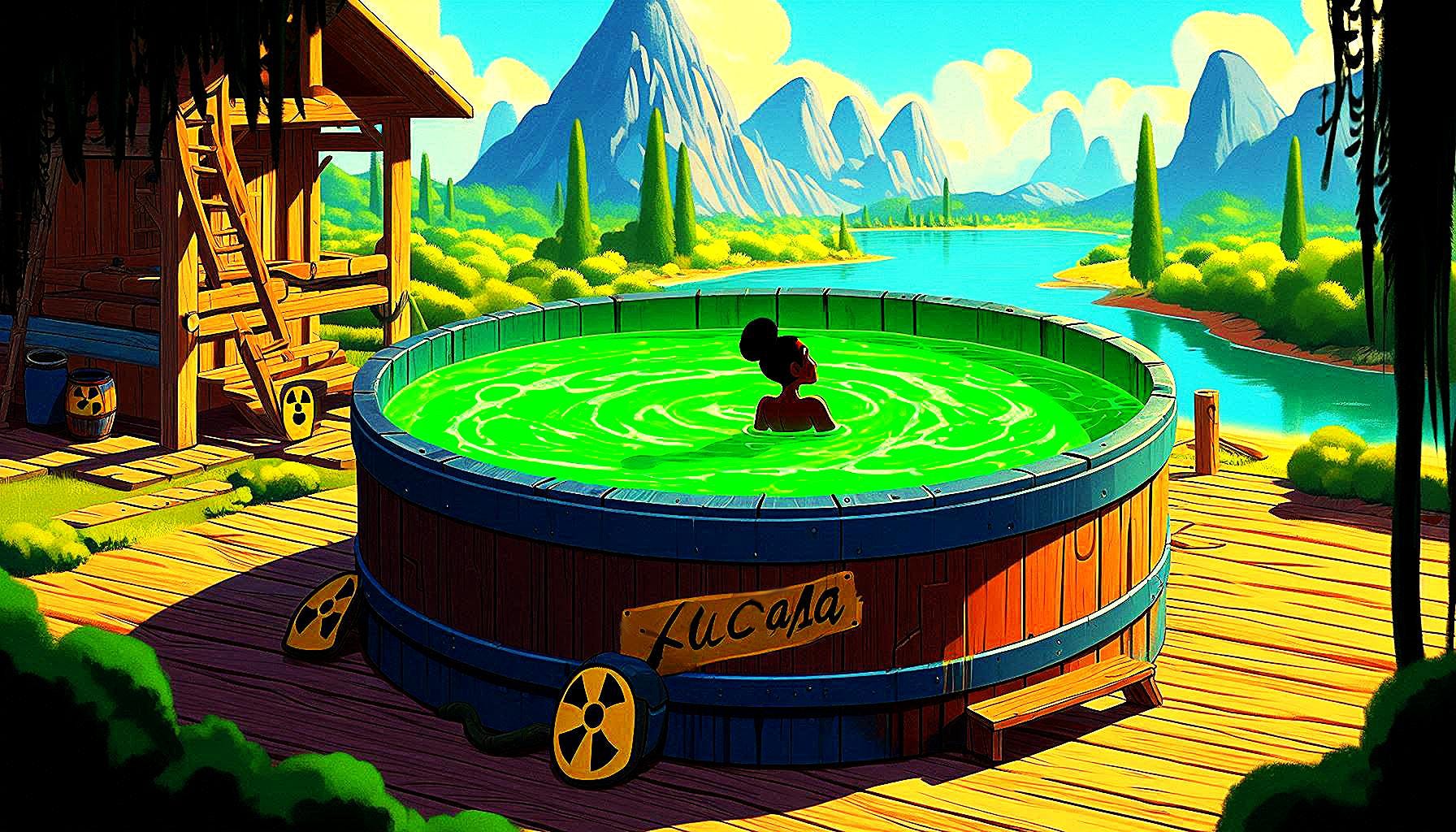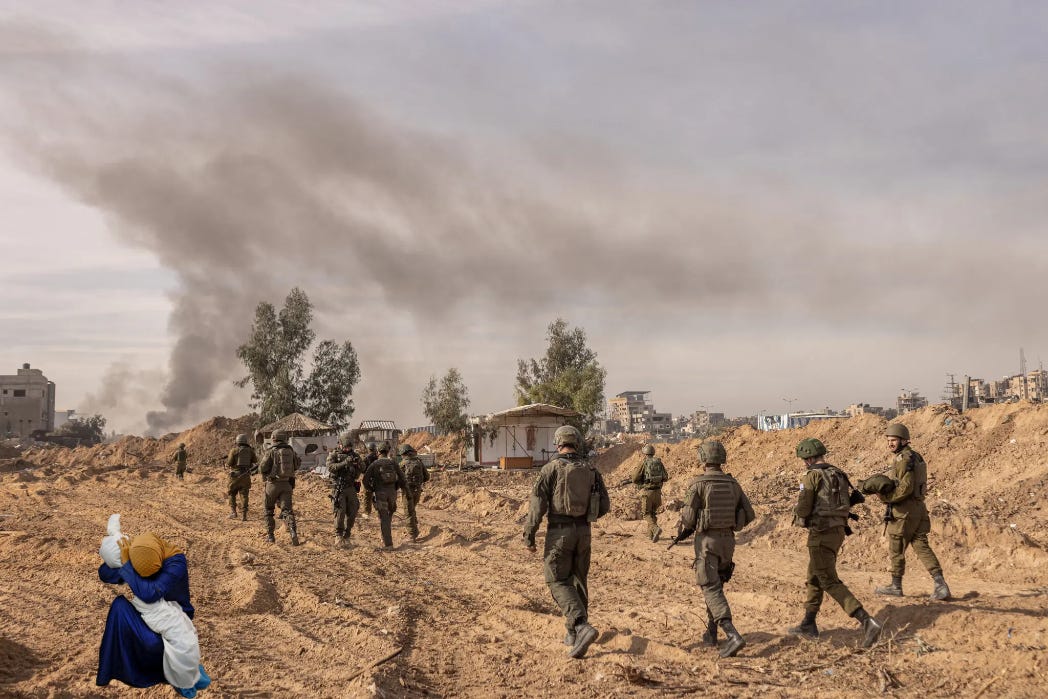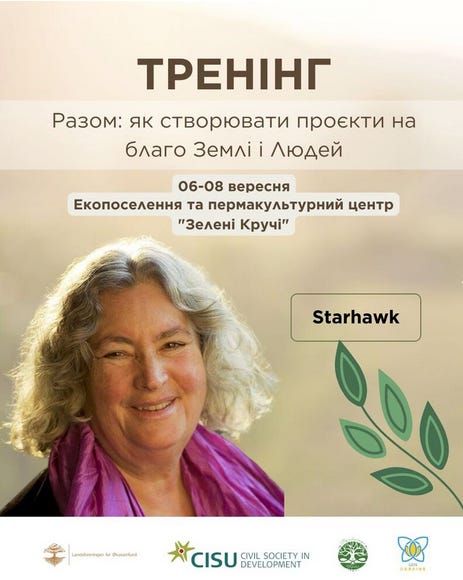Fission Impossible: Ghost Protocol
Those tall tales around the cooling tower will explosively implode
INT. CONTROL ROOM - HTR-PM REACTOR - DAY
The control room is a hive of activity. Engineers and technicians are seated at their consoles, monitoring various screens displaying real-time data from the reactor modules. The atmosphere is tense but focused. Large digital clocks on the walls show the current time and countdowns for the test phases.
LEAD ENGINEER (LI WEI), a seasoned professional in his late 40s, stands at the center, overseeing the operations. JUNIOR ENGINEER (MEI LING), in her early 30s, is at her station, eyes glued to her monitor. TECHNICIAN (ZHANG), a young and enthusiastic team member, is ready to execute commands.
LI WEI (voice steady) Alright team, we're about to initiate the safety demonstration. Mei Ling, confirm the reactor modules are at 200 MWt.
MEI LING (nods) Confirmed, both modules are stable at 200 MWt.
LI WEI Good. Zhang, prepare to stop the normal energy transfer.
ZHANG (fingers poised over the keyboard) Ready, sir.
LI WEI On my mark... Three, two, one... Execute.
Zhang hits a series of keys. The screens flicker as the normal energy transfer is halted. The room holds its breath.
MEI LING Energy transfer stopped. Reactor temperatures are rising as expected.
LI WEI Now, disable the emergency core cooling systems.
ZHANG (disables the systems) Emergency core cooling systems disabled. Monitoring natural cooling process.
The screens show the reactor temperatures climbing to 1500°C. The team watches intently as the data streams by.
MEI LING Temperatures are stabilizing.
The screens show the reactor temperatures retreating to 1200°C.
LI WEI (smiles) Perfect. This is exactly what we wanted to see. The inherent safety features are working as designed.
ZHANG (enthusiastic) This is incredible. We're witnessing history here.
The screens show the reactor temperatures falling to 800°C.
LI WEI Indeed we are. Let's keep monitoring and ensure everything remains stable.
The team continues to monitor the data, their faces reflecting a mix of relief and pride. The control room buzzes with quiet excitement as the test progresses successfully.
FADE OUT.
This scene may have been something like what occurred one year ago during safety tests of China's HTR-PM reactor in Shidao Bay (also known as Shidaowan), which is currently feeding power into the Shandong grid at 2×200 MWt power and has been doing so since December. Unlike a similar scene enacted in Russia on April 6, 1986, China’s new helium-cooled reactor passively stabilized without intervention and was soon able to resume normal operation.
INT. CONTROL ROOM - CHERNOBYL REACTOR 4 - NIGHT
The control room is dimly lit, with the glow of control panels and monitors casting eerie shadows. The atmosphere is tense, with engineers and technicians focused on their tasks. DEPUTY CHIEF ENGINEER (DYATLOV), a stern man in his 50s, stands at the center, overseeing the test. SENIOR ENGINEER (AKIMOV), in his 40s, and JUNIOR ENGINEER (TOPTUNOV), in his 20s, are at their stations.
DYATLOV (voice commanding) Begin the test. Lower the reactor power to 700 MW.
TOPTUNOV (nervously) Power is dropping too fast. We’re below 700 MW.
AKIMOV (alarmed) We’re at 200 MW and still falling!
DYATLOV (irritated) Stabilize the power. Raise it back to 700 MW.
TOPTUNOV (struggling with controls) Trying, but it’s not responding as expected.
AKIMOV (urgently) We need to abort the test. The reactor is unstable.
DYATLOV (firmly) No. Continue with the test. Withdraw more control rods.
TOPTUNOV (hesitant) Withdrawing control rods… Power is rising, but it’s erratic.
AKIMOV (worried) This isn’t safe. We should stop.
DYATLOV (angrily) I said continue! Prepare for the emergency shutdown.
TOPTUNOV (presses the AZ-5 button) Emergency shutdown initiated.
Suddenly, alarms blare as the control rods jam. The room shakes violently.
AKIMOV (shouting) Explosion! We’ve had an explosion!
DYATLOV (stunned) What have we done?
The control room is thrown into chaos as the engineers scramble to understand the magnitude of the disaster unfolding before them. Smoke and debris fill the air, and the once orderly room descends into panic.
FADE OUT.
In Soviet Ukraine, the water-cooled reactor had flashed its coolant to steam, separated it into hydrogen and oxygen, and blown the lid off the pressure vessel and the building, contaminating Northern Europe, causing an estimated one million premature deaths and precipitating the collapse of the Soviet Union. In contrast, the China’s GEN-IV design is being hailed by some as a technological milepost comparable to commercial electricity, manned flight, or the internet. I think that misses the mark, but my analysis doesn’t come from engineering risks (Shidaowan has more than 2200 sets of first-of-a-kind equipment and more than 660 previously untried innovations) or my awareness that China plans to mass-produce and sell these powerplants to Pakistan, Syria, Jordan, Yemen, South Africa, Venezuela, Argentina and any other buyer, cash-up front or easy credit terms. It matters not whether they are in a war zone or have their own weapons ambitions (the reactors produce bomb-grade uranium and plutonium, and 200 dirty-bomb-worthy nuclear isotopes). China could even make its graphene fuel pellets with biochar and turn that electricity carbon negative, an added benefit if your country is running behind on its Paris commitments.
My concern is neither the engineering safety, the proliferation risk, nor the climate abatement potential. My concern is biology.
Poking Holes
Paging through a story in Rolling Stone published January 21, 2020, I came across a name that was familiar to me but perhaps not to many—Marvin Resnikoff.
“Is he still alive?” I asked myself.
Marvin Resnikoff wrote his PhD thesis the year I graduated High School—1965. His favorite way of spending time was calculating (without the benefit of the HP-35 pocket calculator that wouldn’t be introduced until 1972) spin-orbit-split negative-parity baryon resonances in quarks. He came into my field of view in 1976 after he had completed a Fulbright in Chile and been recruited to Ralph Nader’s Public Interest Research Group (NYPIRG). At that time Resnikoff was teaching at SUNY-Buffalo and had been asked by students to look into the decommissioning of a nuclear reactor. That, and a contract to assay the environment of nuclear landfills for EPA, took him down the anti-nuke rabbit hole.
While I was heading up a non-profit public interest law project, the Shutdown Project (later the Natural Rights Center) and busy suing the Nuclear Regulatory Commission over non-accidental (planned) civilian deaths from all stages of the fuel cycle, Resnikoff won an EPA grant to study the NRC’s plan to recycle mixed-oxide fuels (such as plutonium) that would be necessary to sustain the industry after uranium ore was exhausted. In my lawsuits, I drew heavily upon his research into the incredibly dirty business of atomic recycling.
In 1983, Resnikoff produced a landmark study on transportation and storage of high-level waste, The Next Nuclear Gamble, and two books, Living Without Landfills, and Deadly Defense. In 1989, he formed Radioactive Waste Management Associates, a consulting firm he has headed ever since. He is 86.
What the Rolling Stone found interesting in Resnikoff’s work was his discovery, nearly a half-century ago, that nearly every drilling, mining, milling and disposal activity humans do, even if it has nothing to do with nuclear power or weapons, releases radioactivity to the natural environment. Poke a hole in the ground and out comes radon gas. Lofted up with it are a witch’s aroma of radioactive particulates resulting from the decay of minerals deep underground, including unstable isotopes of lead, polonium, bismuth, radium, potassium, carbon, hydrogen, uranium, and thorium. There are about 340 nuclides in nature, of which about 70 are radioactive.
Those Iron Horses that crossed the Great Plains spewed radioactive coal smoke and steam into the lungs of horse-riding nations and prairie dogs. The enslaved captives sent down into the hole to fetch silver at Cerro Rico de Potosi might have died young anyway, but after 1545, they were being killed by radiation diseases spread to the towns near the bellowed Castilian stone furnaces that smelted the ore and vaporized the deadly volatiles.
In the pre-industrial world, ambient levels of heavy metals and radioactivity contributed to what we might call “normal” or “background” levels of human and animal disease and death. There is no safe exposure. A radioactive particle entering your body in a banana (potassium-40) or a Brazil nut (radium) will damage your cells and genes for as long as it remains there. It will mutate your DNA, and the DNA in your sperm and eggs also. In the case of potassium-40, the half-life is 1.25 billion years, and while that might seem scary, it means that the decay rate is very slow, so the danger to you is slight. Radium is more complicated.
Radium Girls
Radium-226 is a product of the decay of uranium (235U and 238U) and thorium (232Th). It decays into 222Rn (3.82 day half-life), which is a noble gas. Beginning with radon—222Rn, a series of six short-lived alpha and beta disintegrations occurs leading to lead—210Pb (22.3 year half-life). This decays by beta emission to bismuth—210Bi (5.01 day half-life), which in turn decays by beta particle into polonium—210Po (138.4 day half-life). The last member of the 238U decay chain is stable lead—206Pb.
The presence of radioactivity in crude petroleum was first detected at the beginning of the 20th century (Burton, 1904). Soon after, it was suggested that the high radium concentrations found at the bottom of the ocean resulted from the continuous supply of radium-enriched organic materials from above (Joly, 1908). Later on, this hypothesis was confirmed by experimental research (Pettersson, 1930; Piggot, 1933).
—Paschoa, A. S., and F. Steinhäusler. "Terrestrial, atmospheric, and aquatic natural radioactivity. Radioactiv. Environ. 17, 29–85." (2010).
Beginning in the 1970s, Marvin Resnikoff started calculating what kind of damage those emissions were doing to us, health-wise. He needed to know that because he wanted to separate the health effects of man-made radiotoxins leaking from landfills at Maxey Flats, West Valley, Barnwell and other NRC-licensed sites. What he learned was that we aren’t just nuking ourselves from nukes. We are nuking ourselves from oil and gas, too. We are nuking ourselves when we mine lithium for electric cars. We are nuking ourselves when we mine quartz to make computer chips.
“Almost all materials of interest and use to the petroleum industry contain measurable quantities of radionuclides,” states a never-publicly released 1982 report by the American Petroleum Institute. Spurred on by the Manhattan Project, government geologists found uranium in oil-bearing layers in Michigan, Tennessee, Oklahoma, and Texas. By the early 1970s, Exxon knew that radioactivity was building up in pumps and compressors at most of its gas plants.
What happened next makes the 8 million deaths from petroleum products annually look like a mosquito bite. We’ll explore that next week, and we will reveal why China’s nuclear gamble, along with Bill Gates’ nuclear venture in Wyoming, may come up snake eyes—busted, a total loss.
Oh, and when China’s new reactor eventually does have a meltdown, Michael Douglas plans to be there with a film crew, screenplay in hand. It will be called The America Syndrome.
This is the first of two parts. In the next part, we will look at Marvin’s Garden— the binding curve of ambient radioactivity that will finally begin to assert itself, bringing a close to the Atomic Era.
Meanwhile, let’s end these wars. We support peace in the West Bank and Gaza and the efforts to bring an immediate cessation to the war. Global Village Institute’s Peace Thru Permaculture initiative has sponsored the Green Kibbutz network in Israel and the Marda Permaculture Farm in the West Bank for over 30 years and will continue to do so, with your assistance. We aid Ukrainian families seeking refuge in ecovillages and permaculture farms along the Green Road and work to heal collective trauma everywhere through the Pocket Project. You can read all about it on the Global Village Institute website (GVIx.org). Thank you for your support.
Help me get my blog posted every week. All Patreon donations and Blogger, Substack and Medium subscriptions are needed and welcomed. You are how we make this happen. Your contributions can be made to Global Village Institute, a tax-deductible 501(c)(3) charity. PowerUp! donors on Patreon get an autographed book off each first press run. Please help if you can.
#RestorationGeneration.
當人類被關在籠内,地球持續美好,所以,給我們的教訓是:
人類毫不重要,空氣,土壤,天空和流水没有你們依然美好。
所以當你們走出籠子的時候,請記得你們是地球的客人,不是主人。
When humans are locked in a cage, the earth continues to be beautiful. Therefore, the lesson for us is: Human beings are not important. The air, soil, sky and water are still beautiful without you. So, when you step out of the cage, please remember that you are guests of the Earth, not its hosts.
We have a complete solution. We can restore whales to the ocean and bison to the plains. We can recover all the great old-growth forests. We possess the knowledge and tools to rebuild savannah and wetland ecosystems. It is not too late. All of these great works are recoverable. We can have a human population sized to harmonize, not destabilize. We can have an atmosphere that heats and cools just the right amount, is easy on our lungs and sweet to our nostrils with the scent of ten thousand flowers. All of that beckons. All of that is within reach.
Social Permaculture
Global Village Institute in cooperation with GEN Global Ecovillage Network Ukraine and Permaculture in Ukraine, invite you to a three-day training on creating eco-projects with the world-famous teacher and author Starhawk.
Where: Ecovillage Zeleni Kruchi (Green Cliffs), Ukraine.
When: 6-8 September 2024 (arrival on the 5th)
Participation fee: 1500 UAH
What: The course will cover:
- the power of collaboration and groups;
- the balance between friendship and accountability;
- adherence to basic human values and needs as the foundation of a stable community;
- tools for communication and conflict transformation;
- principles of social. permaculture as a group compass;
and much more.








I am frequently reminded of The Natural Steps first principle: Don't take things from underground and spread them around willy-nilly on the earth's surface. We are being stupid. We know better, yet we do it anyway because, well, money, profit, and a false sense of "the good life". Nuclear in the end is more dangerous than fossil fuels, so I cannot comprehend Bill Gates idiocy on this. Thanks for the reminder. (An aside, and excellent book on the topic of removing material from the earth is "Material World" by Ed Convey. It does not include nuclear material, but it is quite thorough on sand (silicon), salt, iron, copper, fossil fuels and lithium.)
My Man. Respectable, Believable, Reliable, Down-to-Earth, Sophisticated, Greatly Gifted, Generous, Genius, Decent, No-Frills, Old-School Research and Reporting. One of my long-time
follow-you-anywhere Prophets. Sanity Swoons When You Speak